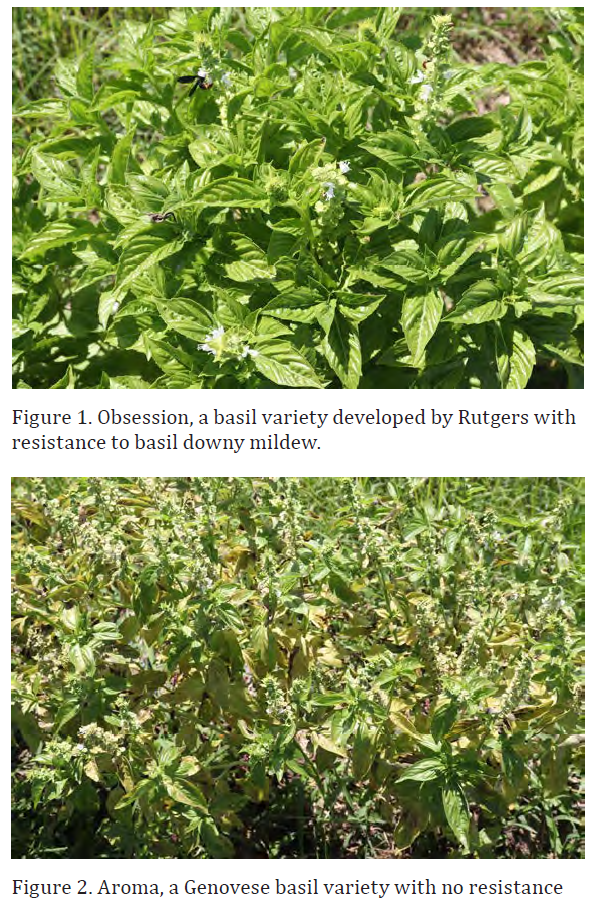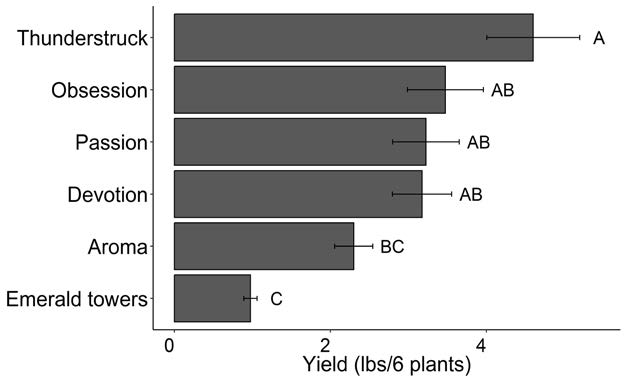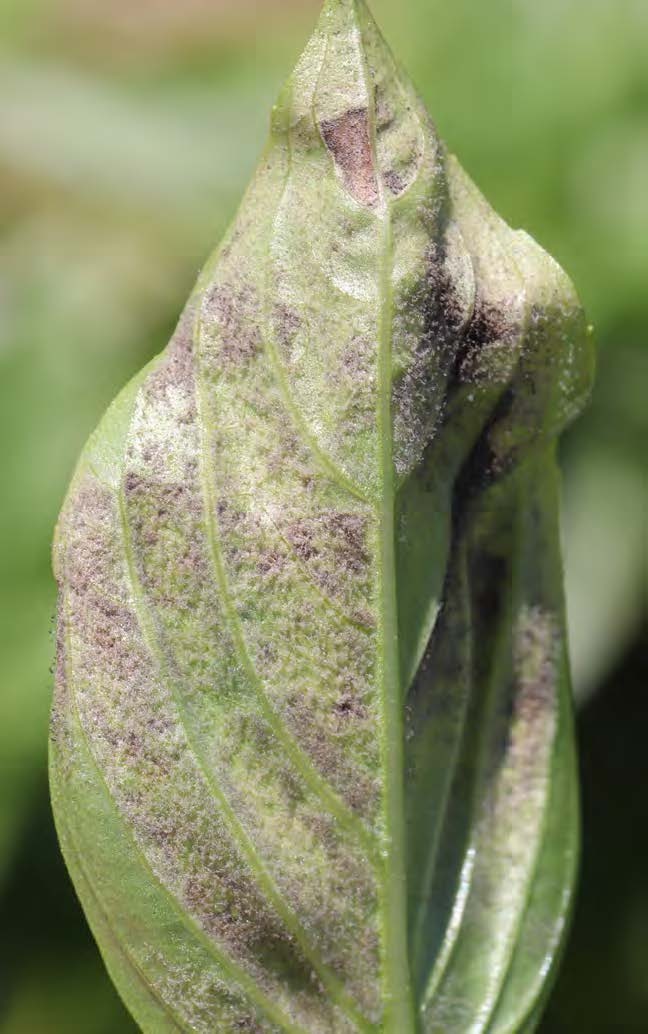Downy Mildew Resistant Basil Trial
Alan Leslie, Extension Educator, Charles County
Basil downy mildew (BDM) is a disease that was first reported in the United States in 2007. Prior to its introduction, basil plants could be reliably grown with little or no pesticide inputs. However, in late summer, BDM infection can devastate a basil crop and quickly render it unmarketable. We carried out a trial to test several varieties basil for their resistance to BDM infection during the summer. We tested six varieties with and without known resistance. Four varieties were developed from the Rutgers breeding program and have BDM resistance: Passion, Devotion, Obsession, and Thunderstruck. These varieties were all released between 2018 – 2020, so this trial tested whether there has been any breakdown in the resistance or if there is any variation in the levels of resistance between varieties. Other varieties included in the trial were Aroma and Emerald Towers, both are Genovese basil varieties with no known BDM resistance.
This trial was conducted during the summer of 2022 at CMREC-Upper Marlboro. Four replicates of each variety were planted on black plastic, where each row of plastic made up a separate replicate, and varieties were randomized within each row. Six plants of each variety were planted together for each replicate, with an in-row spacing of 1’ and a between-row spacing of 4’. Transplants were placed in the ground on June 16 and any dead plants were replaced June 21. Yield was measured from a single harvest on August 18, where entire plants were cut at approximately 3” above the soil line. Plants were weighed for total yield, and assessed for signs of BDM infection. Where BDM infection was suspected, sample leaves were moist incubated in the dark for 24 h to stimulate sporulation.



Yields were fairly similar among all of the BDM resistant varieties, ranging from 4.6 lbs for Thunderstruck to 3.2 lbs for Devotion, as yield averaged per six plants within a replicate. Emerald Towers had significantly lower yield than all of the BDM resistant varieties with 1.0 lbs per six plants. A
roma produced 2.3 lbs per six plants, which was significantly less than Thunderstruck, but not statistically different from the other varieties. Symptoms of BDM were found in all replicate plots of Aroma and Emerald Towers, and was confirmed by the fine, gray sporulation on the undersides of leaves. The level of BDM infection left all but a single plot of Emerald Towers unmarketable. A single plot of Devotion also had leaf discoloration that resulted in plants being unmarketable, but no sporulation could be stimulated by incubating
leaves, so BDM could not be confirmed. Overall, the BDM resistant varieties seem to still be very effective in preventing infection during the late summer, while other susceptible varieties became unmarketable. A full summary of this trial and several others carried out across the state can be found in the May 2023 issue of inside GROWER magazine: https://www.inside-grower.com/.